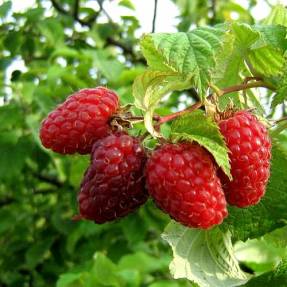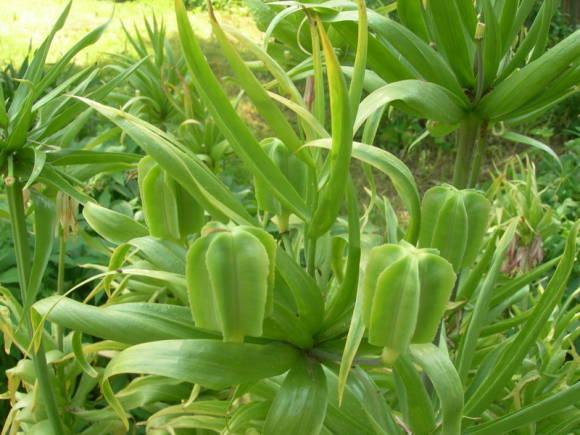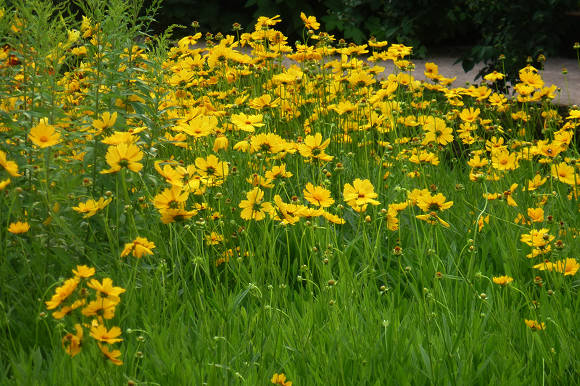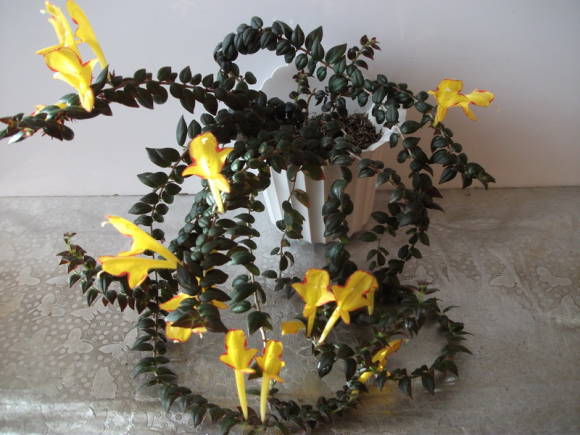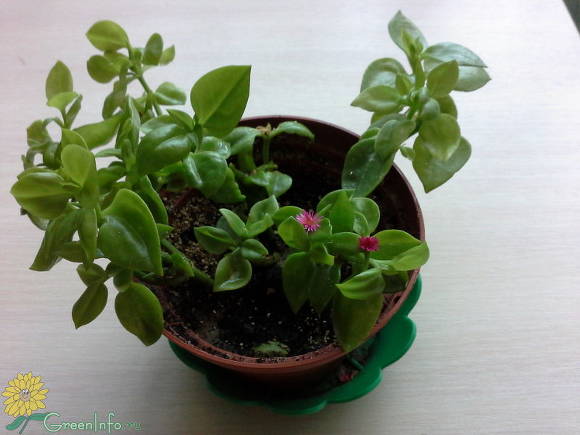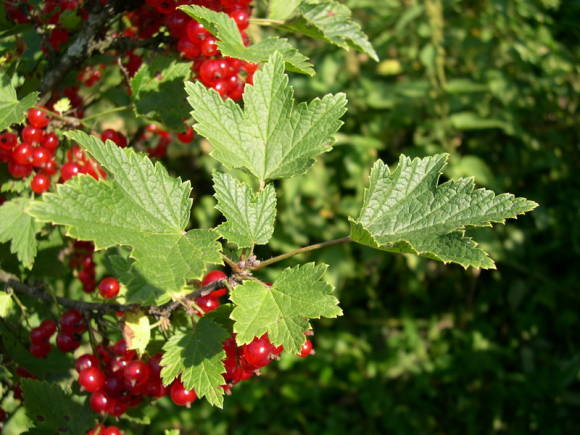It is good if there is a nursery nearby where lemongrass seedlings are sold. And if not? After all, this culture is rare, one might say, exotic. In this case, lemongrass is grown from seeds. And already growing vines are easier to propagate. For this, you can use both root suckers and cuttings.
Schizandra chinensis saplings are sometimes sold (Schisandra chinensis)brought from the Far East. As a rule, this is a growth of wild-growing vines. You should not buy such planting material. Since with it you can bring pests and pathogens that live in those places where the mother vine grows into your garden.

Reproduction of lemongrass by seeds
Lemongrass grown from seedlings begins to bear fruit in the 4th-5th year. Only freshly harvested seeds are used for sowing. They can be sown in the fall, but it is better to do this in the spring after stratification. With this preparation, lasting 3 months, seed germination is 60-70%. Sowing in autumn, at best, gives a germination rate of about 20%.
After harvesting, seeds are isolated from the berries, washed, dried, poured into paper bags and stored at room temperature. In early December, they begin to prepare for sowing. First, it is placed in water for 4 days, changing it daily. Then it is wrapped in a cloth, preferably nylon from tights, and buried in a wooden box with sand. The sand is preliminarily washed, calcined and moistened.
A box with seeds is kept in a room for about 1 month at an air temperature of +18 ... + 20 ° C. The sand is regularly moistened, preventing it from drying out. Once a week, a bundle of seeds is removed from the sand, washed with running water from the tap. Then the seeds are unfolded and aired for 5 minutes. Wrapped again in a cloth, washed with running water, the bundle is slightly wrung out and buried in the sand.
In early January, a bundle of seeds is placed in a bowl with wet sand and kept in the refrigerator for a month at a temperature close to 00C. Or you can wrap a box with seeds in a cloth and bury it in the snow. It is desirable that the snow cover is at least 1 m.
At the beginning of February, a bowl of seeds is transferred to the fruit compartment of the refrigerator. If the box was dug in the snow. It is dug up and transferred to a room where the temperature is not higher than + 80C. Gradually the sand thaws.
Once a week, the seeds are inspected and aired. The sand is regularly moistened. After about 40 days, when the seeds begin to crack, you can start sowing.
Sow in wooden boxes filled with a soil mixture consisting of fertile soil, peat and river sand in a ratio of 1: 2: 1. Grooves are made every 5 cm with a depth of 0.5 cm and seeds are laid in them at a distance of 0.5-1 cm from each other. Sprinkle with soil, watered with a spray bottle and cover with paper or newspaper.
Before sprouting, the soil is moistened daily, preventing the surface layer from drying out. Seedlings come out after about 2 weeks and at a time. In this case, the hypocotal knee is first shown in the form of a loop. It takes a long time before it straightens out, and 2 cotyledon leaves bloom.
With the emergence of seedlings, the shelter is removed, and the sowing box is placed on the windowsill. In this case, the window glass is sealed so that direct sunlight does not fall on the plants. In diffused light and with daily watering, the seedlings will begin to grow rapidly. With the appearance of the 3-5th true leaf, they are transplanted to a garden bed or to a cold greenhouse for growing. It is better to time the transplant by the end of the first week of June, when the threat of late frosts disappears.
On the ridge, transverse grooves are marked with a distance of 15 cm between them. The seedlings are planted together with a clod of earth 5 cm apart. Directly watered and covered with a light non-woven material.

It is even better to grow seedlings in a cold greenhouse. They do it as follows. They knock down the frame from the boards, put it on the ground.The soil is dug inside, a mixture of equal parts of humus and fertile soil is added with the addition of a complex mineral fertilizer (100 g per 1 m2). It is planted in the same way as in the open field. Then the non-woven material is watered and stretched so that it does not touch the seedlings.
Plants are sprayed with water every morning and evening directly through the covering material. In such conditions, the seedlings receive enough moisture and at the same time are in a light shade.
Seedling care consists in regular watering and shallow loosening of row spacings, weeding from emerging weeds. No special plant treatments are required. In the first year of life, seedlings develop very slowly, by autumn their height is only 5-6 cm.
In early August, the shelter is removed. At this time, the seedlings begin to prepare for winter and by September they finish growing, form an apical bud, and the stalk gradually lignifies. With the end of leaf fall, in October, the plantings are covered with dry fallen leaves with a layer of about 10 cm. In this form, the seedlings winter. The shelter is removed in early spring.
When growing seedlings, after the appearance of the first true leaves, Fusarium infection (black leg) occurs. The stalk turns black, becomes thinner, and the seedling perishes. Vegetable crops often suffer from this fungal disease. Therefore, for sowing lemongrass, you cannot take the soil from the garden where vegetables grew. Another cause of the disease is the thickening of the crop. So that all seedlings do not die from the black leg, the patients are removed, and the soil is spilled with a weak solution of potassium permanganate.
Of course, there is a lot of trouble with seed reproduction. However, this is the only way to grow lemongrass where it is difficult to obtain seedlings, as the seeds can be ordered and received by mail. At the same time, it is very important to contact only reputable horticultural organizations that guarantee the delivery of seeds of the current year, because last year's seeds are not suitable for sowing.
Propagation by cuttings

Lemongrass is bred only with green (summer) cuttings. The vines grown from them bear fruit for 3-4 years.
Young, thin, semi-lignified greenish-brown shoots are cut for cuttings in mid-June. Cut them so that there are 3-4 buds on each cuttings. An oblique cut is made under the lower kidney, a straight cut above the upper one, retreating by 5 cm. The lower leaves together with the petioles are removed. A half of the leaf blade is cut off from the top leaf.
Immediately after this, the cuttings are placed in water and kept in it until planting. They are planted in a cold greenhouse with loose and moist soil, covered on top with a layer of sand 3-4 cm thick. They are planted at a distance of 5 cm from each other, obliquely, burying the lower bud into the soil, and leaving the middle one at ground level.
After planting, they are watered and covered with non-woven fabric stretched over rivers. In the future, watering is carried out 2-3 times a day. In this case, the covering material is not removed, but water is poured directly onto it. After a month, roots begin to form, and the percentage of rooting is small. This is the peculiarity of lemongrass. Even the use of growth stimulants does not significantly affect the result. In the best case, about 50% of the cuttings take root.
In mid-August, the covering material is removed. In the fall, rooted cuttings are dug up together with a lump of earth and, before the spring planting, the carrion is in a cold basement, placed in wet sawdust. You cannot leave them in a greenhouse, since even with shelter they completely freeze out in winter.
Reproduction of lemongrass by shoots
This is the easiest and most effective way to propagate lemongrass. The vine growing in the garden is literally surrounded by many shoots carrying a large number of dormant buds. Waking up, they give abundant shoots as early as 2-3 years of plant life. The offspring are simply separated from the mother vines and used as planting material. In the northern regions, it is better to do this in spring, before bud break, to the south - both in spring and autumn.
Reproduction of lemongrass by root cuttings
Carefully cut from the rhizome root segments 5-10 cm long with 1-2 dormant buds.So that the small overgrowing roots do not dry out, immediately after cutting, the cuttings are covered with a damp cloth or sprinkled with damp soil. They are planted in a cold greenhouse or on a garden bed according to a 10x10 cm scheme, covered with a layer of fertile soil 2-3 cm thick.In order for the cuttings to take root better, the soil is moistened daily. They are planted in a permanent place in the spring of next year.
With vegetative propagation, that is, by cuttings or rhizome shoots, the seedlings retain all the properties of the mother vine. Including her gender. We remind you that lemongrass plants have 4 sexual forms:
1 - monoecious, both female and male flowers are formed annually;
2 - female dioecious, on the liana there are only female flowers;
3 - male dioecious, non-fertile vine with only male flowers;
4 - plants with a sex alternating over the years, one year they form only male flowers, the other - only female flowers.
This feature must be taken into account when breeding lemongrass. For example, if you take cuttings only from a dioecious male plant, then you will not wait for fruiting. The vines will bloom, but the berries will not be tied. Such a problem is often encountered when breeding lemongrass taken from places of natural growth. The shoots are separated in early spring or autumn, when the mother plant does not bloom, therefore, its sex, and, accordingly, the coppice shoot, cannot be determined.
Long-term observations have established that lemongrass plants grown from seeds are usually monoecious. Both male and female flowers are formed on them. And their fruiting is annual. Therefore, lemongrass is best planted with seeds.
